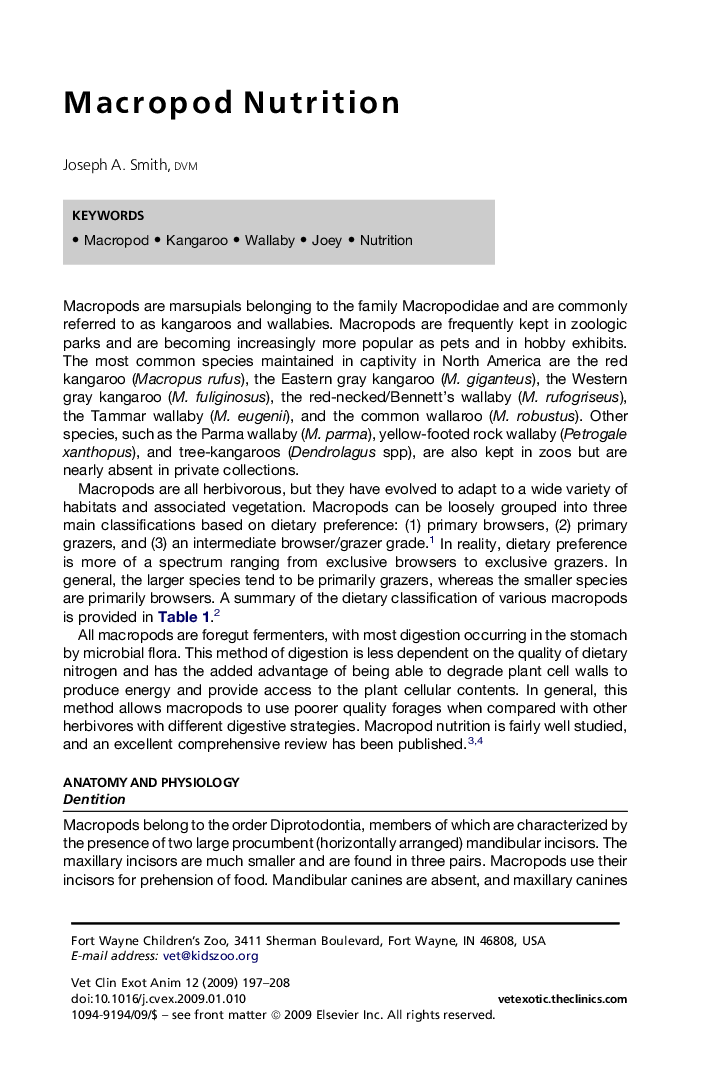| Article ID | Journal | Published Year | Pages | File Type |
|---|---|---|---|---|
| 2413311 | Veterinary Clinics of North America: Exotic Animal Practice | 2009 | 12 Pages |
Abstract
Macropods are herbivorous foregut-fermenters that have adapted to a wide variety of habitats. Anatomic adaptations such as dentition reflect differences in the diet consumed in the wild. Several key differences exist in anatomy and digestive physiology between macropods and other foregut-fermenters such as ruminants. The diet fed to macropods in captivity should be formulated with species-specific wild diets as a model. Hand-rearing orphaned macropods should be done with the unique physiology of macropod lactation in mind to ensure success. This article provides a summary of anatomic, physiologic, metabolic, and behavioral peculiarities of kangaroos and wallabies, with recommendations on captive management based on these traits.
Related Topics
Health Sciences
Veterinary Science and Veterinary Medicine
Veterinary Medicine
Authors
Joseph A. DVM,
